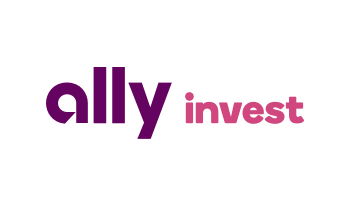Looking for the best robo-advisors for beginners, long-term investors, or socially conscious portfolios? Robo-advisors have made it easier than ever to invest—no financial advisor required.
These automated platforms use algorithms to build and manage your portfolio based on your goals, risk tolerance, and timeline. Most offer low fees, automatic rebalancing, tax-saving strategies, and access to human advisors if you want hands-on support.
In this comparison, we’ve reviewed the best robo-advisors across multiple categories—whether you’re just starting out, want to invest ethically, or need advanced planning tools for larger portfolios.
9 Best Robo-Advisors of 2025 for Every Type of Investor
Here is an overview of our top picks for the best robo-advisors, as well as a brief explanation about what we like about each one:
1. Wealthfront
Key Features:
- Diversified portfolios with 11 different asset classes
- Tax-loss harvesting for all investment accounts
- High-interest cash account
- Automatic rebalancing and portfolio optimization
- College savings plan (529) support
Who it’s best for:
Wealthfront is a strong option for investors seeking a fully automated robo-advisor with a focus on tax efficiency and diversified investments.
Its high-interest cash account and college savings plan support make it an attractive choice for those looking to cover various financial goals.
2. Empower
Key Features:
- Hybrid robo-advisor with access to human financial advisors
- Advanced investment strategies including tax optimization
- Comprehensive financial planning tools
- Retirement and savings goal tracking
- High minimum balance requirement
Who it’s best for:
Empower is ideal for more advanced investors with higher account balances, as well as those who seek a combination of automated investing with human financial advisor support.
Its comprehensive planning and retirement tracking features make it a powerful platform for long-term wealth management.
3. Betterment
Key Features:
- Goal-based investing tailored to personal milestones
- Automatic rebalancing and tax-efficient strategies
- Socially responsible investing options
- Access to human financial advisors (with premium plan)
- No minimum account balance
Who it’s best for:
Betterment is a great choice for beginners and experienced investors alike, who want a goal-oriented approach to investing.
With its socially responsible investing options and access to a licensed advisor (with the premium plan), it provides a well-rounded platform for a variety of investors.
4. Ally Invest
Key Features:
- Low account minimum and no trading commissions
- User-friendly online platform
- Various research-based tools
- No advisory fees for managed portfolios
- Integration with Ally Bank for seamless banking and investing
Who it’s best for:
Ally Invest is an excellent option for new investors looking for a low-cost, user-friendly platform with no trading commissions.
Its integration with Ally Bank makes it a convenient choice for those who want to manage their banking and investing under one roof.
5. Vanguard
Key Features:
- Hybrid robo-advisor with access to Vanguard personal advisor services
- Low-cost, diversified investment options
- Retirement and college savings plans
- Strong reputation and established history
- Higher minimum investment compared to other robo-advisors
Who it’s best for:
Vanguard Digital Advisor is ideal for investors seeking a trusted, established provider with a focus on low-cost, diversified investments.
Its hybrid model offers the benefits of automated investing along with access to a human advisor, making it a strong option for those with larger account balances.
6. M1 Finance
Key Features:
- Fractional share investing
- Customizable portfolios or pre-built expert portfolios
- No management fees or commissions
- M1 Borrow feature allows borrowing against your portfolio
- M1 Spend feature integrates banking and investing
Who it’s best for:
M1 Finance is well-suited for investors who want a high level of customization with their portfolios, allowing them to create their own investment “pies” or choose from pre-built expert portfolios.
As a cost-effective solution, it appeals to budget-minded investors who appreciate the opportunity to leverage their portfolio through borrowing or take advantage of integrated banking services.
7. Ellevest
Key Features:
- Focus on socially responsible investing
- Gender-specific investment advice
- Goal-based investing approach
- Access to career coaching and financial planners
- Low fees
Who it’s best for:
Ellevest is an excellent choice for investors who prioritize socially responsible investing and seek a platform tailored to the unique financial challenges faced by women.
Its goal-driven approach, coupled with access to career coaching and financial planners, makes it a comprehensive platform for value-oriented investors.
8. Facet
Key Features:
- Comprehensive financial planning services
- Access to dedicated Certified Financial Planner (CFP)
- Flat-fee pricing model
- No account minimums
- Not fully automated
Who it’s best for:
Facet Wealth is ideal for individuals who want personalized investment management services but can’t afford the fees associated with traditional financial advisors.
Its flat-fee pricing model and access to a dedicated CFP provide a high level of personalization and support, making it a valuable option for those seeking a more hands-on approach to wealth management.
9. SoFi Automated Investing
Key Features:
- No management fees
- Low minimum balance requirement
- Automatic rebalancing
- Access to certified financial planners
- Robust customer service
Who it’s best for:
SoFi Automated Investing is an excellent option for investors seeking a low-cost, accessible platform with strong customer support.
With no account fees and a low balance requirement, it’s a great choice for those just starting their investment journey or those who want access to financial planning resources without paying high fees.

A Side-By-Side Comparison of the Best Robo-Advisors
Listed below is a side-by-side overview of what each robo-advisor has to offer.
| Broker | Fees | Promotion | Account Minimum |
|---|---|---|---|
| Ally Invest | 0.30% | No promotions offered | $100 |
| Betterment | 0.25% – 0.40% | A year of free management | $0 |
| Bloom | $10 per month | $10 off the first year | $0 |
| Ellevest | $12 per month | 2 months free with promo code | $0 |
| Empower (formerly Personal Capital) | 0.49% – 0.89% | No promotions offered | $100,000 |
| Facet Wealth | $480 per year or more | No promotions offered | $0 |
| FutureAdvisor | 0.50% | Three months of free management | $5,000 |
| M1 Finance | 0.0% | No promotions offered | $100 |
| SoFi Automated Investing | 0.0% | Free career counseling and loan discounts | $1 |
| Vanguard | 0.20% – 0.30% | No promotions offered | $50,000 |
| Wealthfront | 0.25% | $5,000 in assets managed for free | $500 |
| Wealthsimple | 0.40% – 0.50% | $10,000 in assets managed for free | $0 |
How do robo-advisors work?
A robo-advisor is a specialized software that provides automated investment portfolios based on your goals and risk tolerance. Your risk tolerance is based on your answers to the questions provided.
Robo-advisors use algorithms to choose the right asset allocation based on your risk tolerance, investment goals, and time horizon, providing a customized and efficient approach to portfolio management. Some services give you access to human advisors as well.
Robo-advisors are a viable option for anyone who wants to start investing but can’t afford a portfolio management firm. Or if you just want a hands-off approach to investing, robo-investing is a great choice for diversifying your investments. These services typically have low management fees and require low account minimum balances.
So if you don’t have tens of thousands of dollars at your disposal but still want to start building an investment portfolio, using a robo-advisor has a much lower barrier to entry. There are many online services available on the market, but the ones listed above stand out from the pack.
How to Choose the Best Robo-Advisor for Your Investment Goals
Choosing the right robo-advisor starts with knowing what you want from your investments. The right platform should match your goals, comfort with risk, and feature preferences. Here’s how to make the best decision:
1. Set Clear Investment Goals
Decide what you’re investing for—retirement, a house, your child’s education, or long-term growth. Some robo-advisors focus on specific outcomes and offer tools to help you stay on track. Pick one that supports your goals and makes them easy to manage.
2. Know Your Risk Tolerance
Your risk tolerance affects how your money gets invested. If you prefer steady growth, you’ll want a more conservative mix. If you’re chasing higher returns, a riskier portfolio might suit you better. Choose a platform that adjusts to your comfort level and time horizon.
3. Compare Fees and Account Minimums
Some robo-advisors charge a flat monthly fee. Others take a percentage of your invested assets. Minimum account balances range from $0 to $100,000 or more. Make sure the costs fit your budget and that you’re not overpaying for features you won’t use.
4. Look at Available Investments
Most robo-advisors use exchange-traded funds to build your portfolio. Others may include index funds, bonds, or socially responsible investments. Choose one that matches how you want your money invested—especially if you care about ethical investing or tax efficiency.
5. Check for Extra Features
Some platforms offer automatic rebalancing, tax-loss harvesting, or access to human financial advisors. Others include banking tools, borrowing features, or retirement planning resources. These extras can add real value depending on your needs.
6. Evaluate the User Experience
You want a clean, intuitive dashboard and easy access to your account. Strong mobile apps, helpful guidance, and fast customer service all make a difference—especially if you’re new to investing.
7. Read Recent Reviews
User reviews often reveal what it’s really like to use a platform. Look for feedback on performance, customer support, and ease of use. Prioritize reviews from people with similar financial goals to yours.
Key Features to Look for in a Robo-Advisor
Before you open an account, make sure the platform has the right mix of features to meet your needs. Here are the key things to look for:
- Management fees: Most robo-advisors charge an annual fee, usually a percentage of your assets. Even small differences can impact your long-term returns, so look for platforms with transparent and competitive pricing.
- Types of accounts offered: Some robo-advisors only support taxable accounts, while others offer Roth IRAs, traditional IRAs, and other retirement options. Make sure the account types match your financial goals and timeline.
- Investment options: Most platforms use low-cost exchange-traded funds, but some include index funds or mutual funds. Check whether the investment choices align with how you want to grow your money.
- Automatic rebalancing: Your portfolio can drift from its target as markets change. Automatic rebalancing helps keep your risk level in check without requiring manual adjustments.
- Access to financial advisors: Some robo-advisors include or offer add-ons for human financial guidance. This can be helpful if you want more personalized advice without paying the full cost of a traditional advisor.
Types of Investments Offered by Robo-Advisors
Robo-advisors build your portfolio using a mix of investment types designed to match your goals and risk level. Knowing what each option means can help you make smarter choices. Here are the most common investments you’ll see on these platforms:
1. Exchange-Traded Funds (ETFs)
ETFs are a popular investment option among robo-advisors due to their low costs and broad diversification. An ETF is a collection of securities, such as stocks, bonds, or commodities, that tracks a specific index or sector. ETFs trade on stock exchanges, just like individual stocks, and offer investors exposure to a wide range of asset classes, industries, and regions.
2. Index Funds
Index funds are mutual funds that track the performance of a specific market index, such as the S&P 500 or Nasdaq Composite. Like ETFs, they provide broad diversification and have low management fees. By investing in an index fund, you’re essentially buying a small piece of every company within that index, reducing the overall risk in your portfolio.
3. Mutual Funds
Mutual funds pool the investments of multiple investors to purchase a diversified portfolio of stocks, bonds, or other securities. They are less common in robo-advisor portfolios due to their higher fees compared to ETFs and index funds, some robo-advisors still include them as an investment option, particularly for specific sectors or strategies.
4. Bonds
Bonds are debt securities issued by governments, corporations, or other entities to raise capital. When you invest in a bond, you’re essentially lending money to the issuer in exchange for periodic interest payments and the return of the principal amount at the bond’s maturity. Bonds are typically considered less risky than stocks and can provide a steady income stream, making them a popular choice for conservative investors or those nearing retirement.
5. Real Estate Investment Trusts (REITs)
REITs are companies that own, operate, or finance income-producing real estate properties. They allow investors to gain exposure to real estate investments without the need to buy or manage properties directly. REITs can provide diversification and income potential to a portfolio, as they typically pay regular dividends from the rental income generated by their properties.
6. Socially Responsible Investing (SRI) and Environmental, Social, and Governance (ESG) Funds
SRI and ESG funds focus on investments in companies that meet specific ethical, environmental, social, or governance criteria. These funds allow investors to align their investment portfolios with their values and support businesses that have a positive impact on society and the environment. Some robo-advisors offer SRI and ESG options to cater to the growing demand for responsible investing.
7. Target-Date Funds
Target-date funds are designed to simplify long-term investing, particularly for retirement planning. These funds automatically adjust their asset allocation over time, gradually shifting from higher-risk investments like stocks to more conservative investments like bonds as the target retirement date approaches. This helps investors maintain an age-appropriate risk level in their portfolios without needing to make manual adjustments.
How to Monitor and Adjust Your Robo-Advisor Portfolio
Robo-advisors do most of the work for you, but that doesn’t mean you can set it and forget it forever. To stay on track, it helps to review your portfolio and settings every so often. Here’s how to do it:
1. Revisit Your Goals and Risk Tolerance
Your financial goals or risk comfort level may shift over time. If you get a raise, change jobs, or adjust your retirement plans, make sure your robo-advisor profile reflects that. Updating your settings helps the platform manage your money the way you actually want.
2. Track Portfolio Performance
Compare your portfolio’s results to common benchmarks like the S&P 500 or a target-date fund. If your returns lag over time or don’t match your risk level, consider tweaking your settings—or trying a different platform.
3. Check for Rebalancing Gaps
Most robo-advisors handle rebalancing automatically, but it’s still smart to spot-check. If your investments have drifted far from your target mix, that could mean your settings are off—or that something has changed in the market or your life.
4. Pay Attention to Market Trends
You don’t need to follow every headline, but a basic sense of what’s going on can help you understand your returns and risk exposure. If market volatility spikes or interest rates change, you’ll want to know how it affects your plan.
5. Review Platform Features
Robo-advisors often roll out new tools—like tax optimization features, cash accounts, or retirement tracking. Log in now and then to see what’s new. If another platform starts offering better features or a lower fee, it may be worth switching.
6. Talk to a Financial Professional if Needed
If you’re dealing with a big financial decision—like selling a business, inheriting money, or planning early retirement—a human advisor may be helpful. Some robo-advisors include access to certified planners for this reason.
Final Thoughts
Robo-advisors offer a simple, low-cost way to build wealth without the stress of managing every investment decision yourself. They combine automated portfolio management with useful features like rebalancing, tax strategies, and access to human advisors—without the high fees of traditional firms.
Before you choose a platform, think about your long-term goals, comfort with risk, and the types of accounts you need. Pay close attention to fees, investment options, and any extra tools that can help you stay on track.
Once you’re set up, check in from time to time to make sure your portfolio still matches your goals. The best robo-advisors make it easy to adjust your strategy and grow your money—on your terms.












